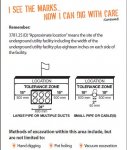JWCELECTRIC
Senior Member
- Location
- Massachusetts
I am installing a natural gas generator at a home. Are there distances in the code that require the underground electric conduit feeder from genset to be away from underground gas pipe, or can they be run in the same trench next to each other? Thanks



